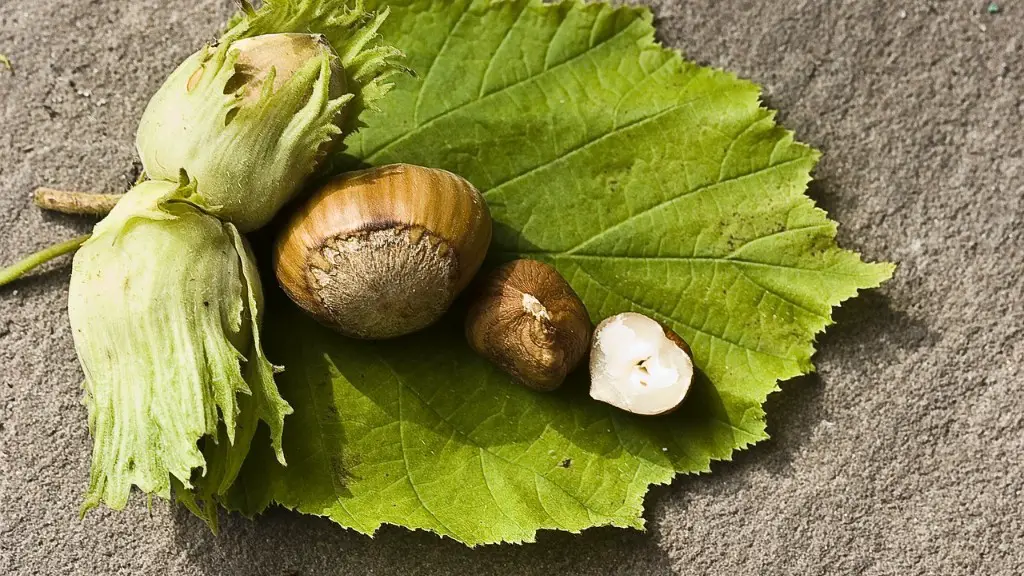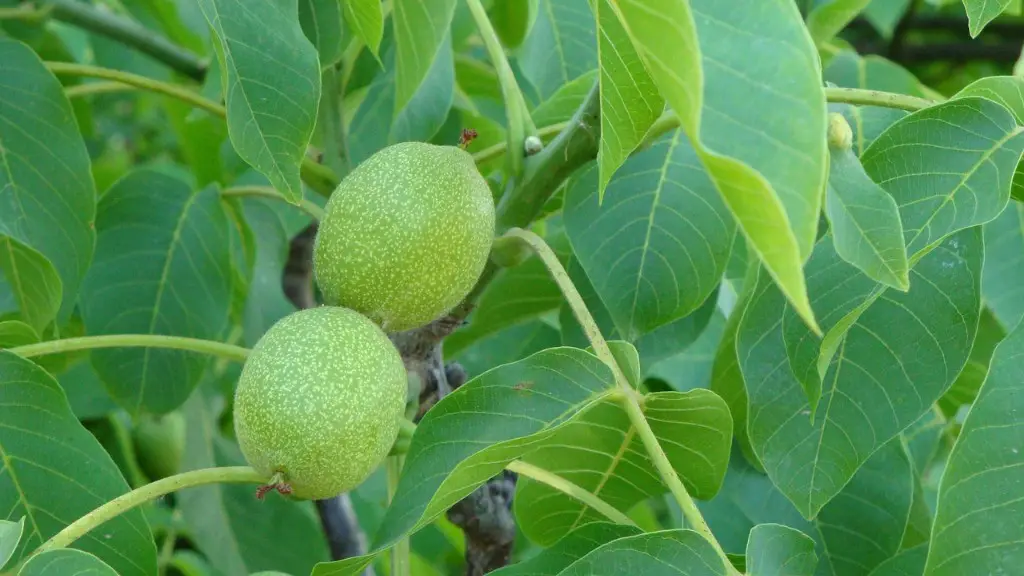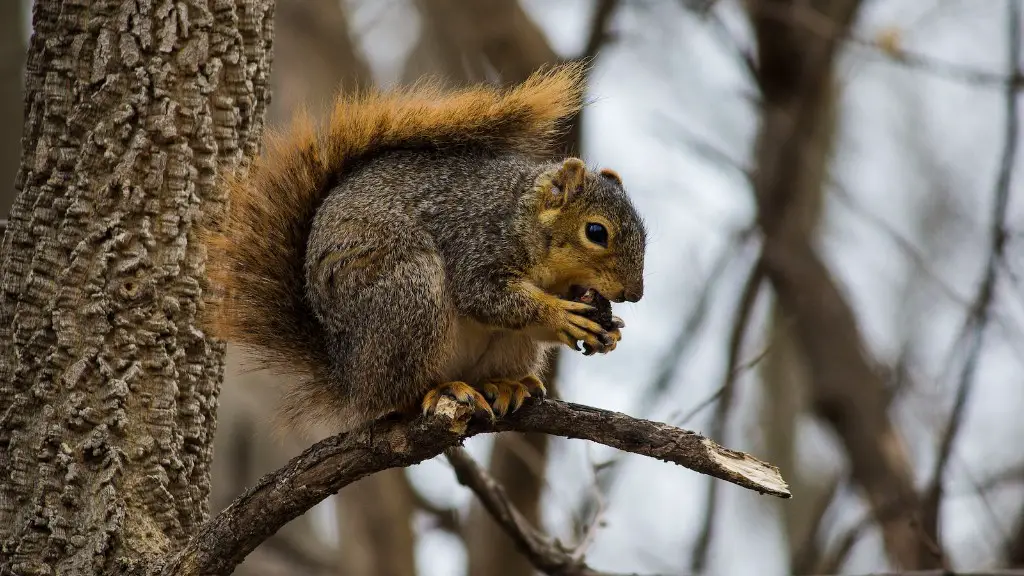A buckeye is a tree that is found in different parts of the United States. The most common type of buckeye is the Ohio buckeye (Aesculus glabra), which is the state tree of Ohio. The Ohio buckeye can grow to be about 50 feet tall and has large leaves that are about 6 inches long. The buckeye tree produces a nut that is about the size of a chicken egg. The nut of the buckeye tree is used in different ways, including making candy and being used as a good luck charm.
The buckeye nut comes from the buckeye tree.
What kind of tree has a buckeye nut?
The Ohio buckeye is a member of the Hippocastanaceae, the Horse Chestnut family. Species in this family range from medium shrubs to large trees. Well known species include various buckeyes and horse chestnut (A hippocastanum), an ornamental widely planted in the northeast and northwest.
Buckeyes have a long history of being used for medicinal purposes by Native Americans. These tribes would crush the nuts and knead them into a salve, which was then used to treat rashes and cuts. Today, some people believe that buckeyes can relieve pain from conditions like rheumatism and arthritis. While there is no scientific evidence to support these claims, many people swear by the healing power of buckeyes.
Can you eat buckeyes from a buckeye tree
Seeds of the Ohio buckeye resemble edible chestnuts, but the fruits of the Ohio buckeye are not edible and can be toxic.
If you come into contact with a poisonous plant, it is important to wash the area with soap and water as soon as possible. Symptoms of exposure to a poisonous plant include muscle weakness and paralysis, dilated pupils, vomiting, diarrhea, depression, paralysis, and stupor. If you experience any of these symptoms, it is important to seek medical attention immediately.
Can you touch buckeye nuts?
The buckeye tree is a type of plant that is poisonous if ingested. However, just touching the tree is not harmful. Farmers often remove buckeye trees from fields where cattle graze to prevent the animals from eating any part of the tree.
Buckeyes are poisonous to ruminants like deer and cattle, so it’s best not to cultivate them. They’re also toxic to humans and many other animals, so you need to be aware of the risks before deciding to plant them.
Do squirrels eat buckeye nuts?
As far as we know, squirrels are the only animals that can eat buckeye nuts without getting sick. Researchers believe that this is because of their strong stomach acids, which break down the toxins in the nuts. So if you’re ever feeling adventurous, go ahead and try a buckeye nut!
The buckeye is a special nut that is known to bring good luck to those who carry it with them. The buckeye is smooth and round when it is first picked, and it is said that the more you carry it in your pocket, the more luck it will bring you.
What did Native Americans use buckeye nuts for
The native Californian tribes were very clever in their use of buckeye seeds. They would grind up the seeds into a powder and use it to stupefy schools of fish in small streams. This made it much easier for them to catch the fish. The smooth, straight branches of the buckeye tree were also useful to the native people. They would use it as a bow drill and a fire drill.
Buckeye poisoning can occur if the nut is consumed in larger doses due to their high concentration of tannic acid. Symptoms of Buckeye poisoning include nausea, vomiting, diarrhea, and abdominal pain. So it is important to not eat too many.
Why are buckeyes popular in Ohio?
Ohioans have referred to themselves as Buckeyes since at least the presidential election of 1840, when Ohio resident William Henry Harrison won the presidency Harrison’s supporters carved campaign souvenirs out of buckeye wood to illustrate their support for their fellow Ohioan.
The term “Buckeye” is thought to come from the Native American word “osheka,” meaning “great river.” The Ohio River, which forms the southern border of the state, was a major transportation route in the early days of the state’s history.
Buckeyes are also the state tree of Ohio. The buckeye tree is a small to medium-sized tree that grows up to 30 feet tall. The leaves are dark green and have five or six shallow lobes. The flowers are small, yellow-green, and grow in clusters. The fruit is a dark brown or black nut that is surrounded by a green husk.
Buckeyes are found throughout Ohio and are especially common in the southern and central parts of the state.
These buckeyes are the perfect sweet and salty treat! The peanut butter balls are dipped in dark chocolate and then rolled in sugar to create a crumbly, yet smooth texture. These remind me of peanut butter cups, but with a twist!
What is the difference between a chestnut and a buckeye nut
Buckeyes and horse chestnuts are both poisonous. However, the nuts of the buckeye tree are safe to eat. The nuts of the horse chestnut tree are not safe to eat.
The Buckeye is a spiny-shelled nut that grows on trees and is related to the horse chestnut. The foliage and fruit contain tannic acid that is poisonous to cattle and humans. It is said that just half the nut is lethal and only squirrels know which half to avoid.
Can cattle eat buckeyes?
Buckeye poisoning generally occurs when animals eat the leaves and sprouts of the buckeye. As little as 05% body weight of ground nuts fed to calves can produce severe poisoning.
Be very careful if you have a buckeye tree on your property, as the most toxic chemical in the tree are glycosides, which can produce serious intestinal symptoms in dogs if ingested. If you think your dog has eaten any part of the buckeye tree, please seek veterinary care immediately.
Can you grow a tree from a buckeye nut
It’s important to plant Buckeyes in loose, well-worked soil about 6 inches apart, and at a depth twice the diameter of the seed. This will help the seedlings to emerge easily and encourage strong root growth. It’s also a good idea to plant more Buckeyes than you want, since only half are likely to germinate. To help hold the soil in place, put 2 to 3 inches of mulch, straw or well-rotted sawdust over the planting.
Buckeye nuts are inedible unless they are leached first. Leaching removes tannins while preserving the nutritional content of the meat. To leach buckeye nuts, boil them, peel them, and soak them.
Conclusion
The buckeye nut comes from the buckeye tree.
The buckeye nut come from the Aesculus glabra tree.




